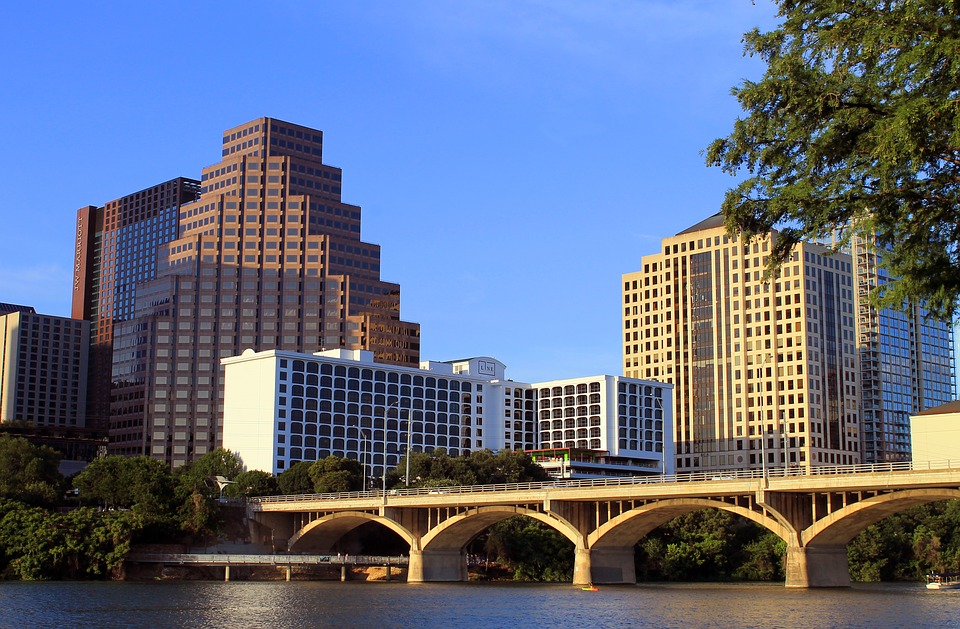
In 2018, water shortages have become one of the most dire issues around the globe. This year, Cape Town narrowly avoided a Day Zero scenario in which its dams were completely depleted. But, this wasn’t before the city imposed a daily ration of 25 liters per person. That’s showering just twice a week and leaving the toilet unflushed. By contrast, the average American uses 375 liters of water each day, and we’re indeed the world’s biggest water consumers per capita. The news of droughts around the world and California’s own record-breaking five-year drought hasn’t stopped the general public from using as much water as we want, when we want. Water shortage seemed to be a distant problem—until, it found its way to my city: Austin, Texas.
October 22
Austin Water Utility issues a city-wide boil-water order. I receive the news while busing over to work. I shrug off the present-day notice, hoping this will pass within 48 hours.
I turn my interest to coffee—the kitchen has been shut down at the office, and I’m deeply dependent on caffeine. This is no problem, I think. I’ll just drop by Starbucks, grabbing a grande to sip on throughout the day. I’ll cringe at my unpreparedness and lack of a reusable tumbler, but that’s fine. After all, it’s just for today.
We learn historically high levels of debris in our water slowed the treatment process, requiring Austin Water to “distribute water at treatment levels not typical of the utility’s high standards for consumption” (Austin Business Journal). The general mood: confusion. Should we wash or sanitize our hands? May we run the dishwasher? Where’s the best place to find a cool bottle of water downtown?
I step away from work to vote with some friends. It isn’t long before someone brings up Flint, Michigan. We’ve got it easy: From January 2016 to early 2017, these questions, inconveniences, and anxieties rested on those residents and still prompts issue to this day.
October 23
By now, we’ve learned there’s no clear end in sight. Grocery stores struggle to keep bottled water well stocked, plenty of restaurants shut down, and residents are instructed to conserve water usage overall.
I wake up early to prepare a pot of French-pressed coffee. I grab my 25-ounce Swell water bottle from the fridge that’s been cooling fresh water since the night before. Being slightly more prepared, I’ll save money and limit the need for buying one-use containers.
I’ve spent the last few months drilling the importance of hydration into my head while attending heated vinyasa flow classes five to six times per week. I need nearly 64 ounces of water, or I’ll slowly transform into one unhappy raisin. It isn’t long before we’re out of bottled water at work, but we make due with sharing an electric kettle. I become keenly aware of my dry skin and overwhelming thirst.
That evening, I joke with my significant other, “I’m starting to think I wouldn’t last through the pioneer times.”
October 24
I’m less productive at work and my fitness routine falters. This week of caffeine deprivation and overall inconvenience drags on. But, life continues.
I realize I am not a mother caring for a young and far more vulnerable child or an individual coping with a potentially compromising immune system deficiency. Again, I must value the sheer positivity of my circumstances and channel empathy toward others whenever possible.
October 28
Austin Water lifts the boil-water notice.
Mindful Consumption Moving Forward
Recognize First-World Privilege:
Austinites–like many Americans–are lucky to live in such a well-developed city that goes above and beyond to protect us all. I knew these inconveniences were temporary and that they would make our eventual return to normalcy that much sweeter. Others aren’t so lucky. It’s important to keep this perspective in check.
Clean with Intention:
This covers your kitchenware, body, and pearly whites. I’ve left the faucet running too many times as I struggle to remove steel-cut oat remnants from my Instant Pot or parse through every bristle of my toothbrush. The fact is, I could be soaking my dishes, sanitizing my brush, and showering in a more effective manner. We could all break the habit of wasting excess water for extended periods of time by practicing awareness while cleaning.
Eat Vegan:
Agriculture tops over 90% of all water use in most countries, especially on the western side of the world. Livestock farming uses far more water than what’s needed for the production of grains, fruits, and vegetables. Not only is a vegan diet the most impactful lifestyle for combating climate change, it will also save the most water.
Lead by Example:
When times get tough, people tend to lose sight of good virtue. Offer those around you the intention of generosity and preparedness. In this case, that meant waking up early to prepare beverages to spare just one extra water bottle for someone else. Or, searching for another recycling bin when those around you are well over filled. Become a source of dependability and kindness for others and witness the ripple effect of your shared positivity.
Here’s something we often forget as Americans: Like food, water is not an infinitely renewable resource. It has limited capacity for renewal, and climate change has disrupted the Earth’s hydrological cycle to further erode our water supply. It’s time we actively reshape our mindset to treat water as the precious resource it truly is.
Have you lived with a water shortage or a crisis?
Also by Holly: Perfect Ethical Fashion Brand For You, According To The Zodiac
Detox-Friendly, Eco-Friendly Tips For A Sparkling Kitchen
Get more like this—Subscribe to our daily inspirational newsletter for exclusive content!
Photos: Pixabay, Pexels





